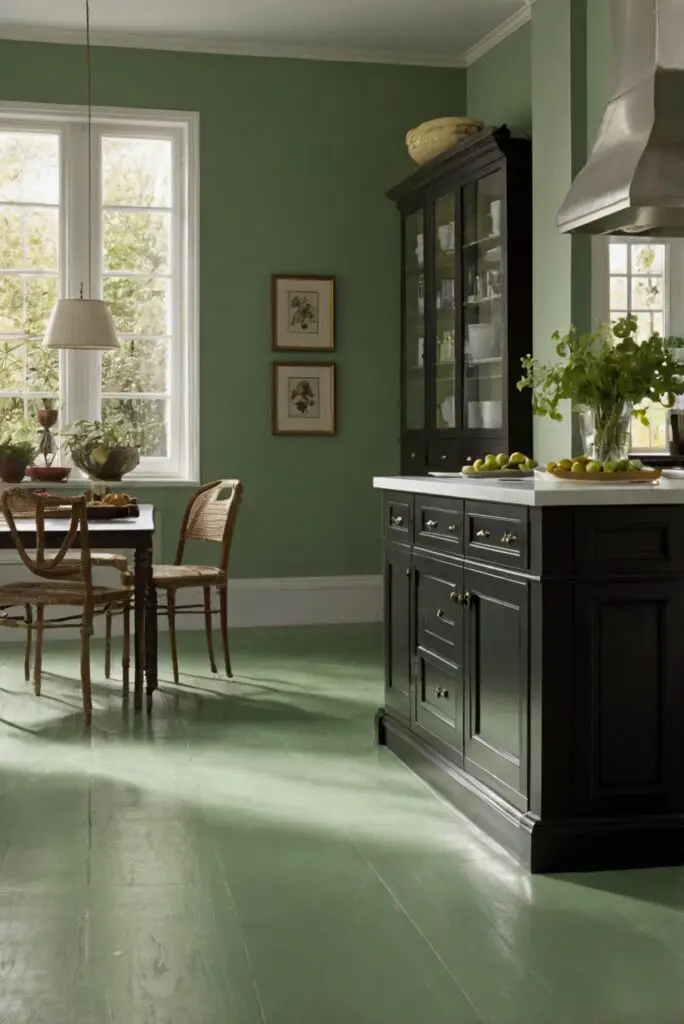Light or dark floors? The ultimate debate in kitchen design. Discover the pros and cons of each to transform your space.
I prefer light floors in the kitchen for a more spacious and airy feel. Light-colored floors add brightness to the room and make it appear larger. To complement light floors, you can opt for cabinets in darker shades to create an elegant contrast. When choosing wall paint, consider neutral or muted tones to enhance the overall aesthetic. It is essential to focus on space planning to ensure a functional and visually appealing kitchen design. Additionally, coordinating color schemes throughout the home will create a cohesive and harmonious interior design. Experiment with different hues to find the perfect combination that suits your style and preferences.
Advantages of Light-Colored Floors in the Kitchen:
Light-colored floors in the kitchen offer several advantages. They create a sense of space and openness, making the kitchen appear larger and brighter. Light floors reflect natural light, giving the room a more airy and welcoming feel. They also hide dirt and dust better than dark floors, making them easier to maintain. Additionally, light floors can serve as a neutral backdrop that allows other design elements in the kitchen to shine.
Unique Look with Light and Dark Floors:
My Lovely Spring Paint for 2025
Ready for a Spring Makeover? Explore the Freshest 2025 Paint Trends!
White Sage/Green SW Pistachio green Soft blue Honeysweet/Orange Pink Sugar Sage Tint BMAs an Amazon Associate, I may earn a commission from qualifying purchases at no extra cost to you.
Mixing light and dark floors in the kitchen can indeed create a unique and stylish look. This combination can help define different areas within an open-plan kitchen, such as separating the cooking area from the dining space. It also adds visual interest and contrast to the room, making it more dynamic and engaging. However, it is crucial to ensure that the transition between the two floor colors is seamless and well-coordinated to achieve a cohesive overall aesthetic.
Choosing Floor Color Based on Cabinet Finishes:
When selecting the right floor color for your kitchen based on cabinet finishes, consider creating a harmonious color palette. For light cabinets, you can opt for either light or dark floors depending on the desired contrast. Light floors can complement light cabinets for a cohesive look, while dark floors can create a striking contrast. Similarly, dark cabinets can be paired with light floors to balance the visual weight in the room.
Paint Colors with Light Floors:
Choosing paint colors that work well with light floors in the kitchen is essential to create a cohesive and inviting space. Light floors provide a versatile base that pairs nicely with a wide range of colors. Soft neutrals like white, beige, or light gray offer a classic and timeless look that complements light floors beautifully. You can also experiment with pastel shades or muted tones to add subtle pops of color without overwhelming the space.
Maintenance of Dark Floors:
My fAV Spring DECOR for 2025
Discover Spring’s Best 2025 Decor Combinations – Perfect for Any Room!
Oversized Indoor Plants White Curved Sofas Rugs BOH Brown Cream Moroccan Hype Boho Rug Outdoor Patio Furniture Sets Topfinel Pillow CoversAs an Amazon Associate, I may earn a commission from qualifying purchases at no extra cost to you.
Dark floors in the kitchen can be visually striking and add warmth to the space. However, they may require more maintenance compared to light floors. Dark floors tend to show dust, dirt, and scratches more prominently, making regular cleaning and maintenance crucial. Using rugs in high-traffic areas can help protect dark floors and reduce wear and tear over time.
Using Area Rugs with Light and Dark Floors:
Area rugs can be a fantastic way to complement both light and dark kitchen floors. For light floors, you can choose a rug with bold patterns or vibrant colors to create a focal point in the room. These rugs can add a touch of personality and visual interest to the space. On the other hand, for dark floors, opt for lighter-colored rugs to create a striking contrast and brighten up the room.
Popular Kitchen Decor Styles:
Various kitchen decor styles work well with both light and dark floors. For light floors, modern and Scandinavian styles are popular choices. These styles emphasize simplicity, clean lines, and a light color palette, creating a fresh and contemporary look. In contrast, dark floors complement rustic, industrial, or traditional kitchen designs by adding depth and richness to the space.







